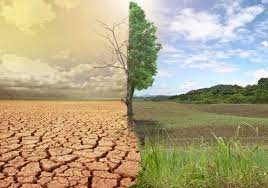Haryana experiences a diverse climate, with distinct seasons and varying weather patterns throughout the year. The state’s climate can be broadly categorized into four main seasons: summer, monsoon, post-monsoon, and winter.

Summer (April to June)
-
- Summers in Haryana are hot and dry, with temperatures often soaring above 40°C (104°F) during the day.
- The region experiences intense heat, especially in the months of May and June, with temperatures occasionally reaching 45°C (113°F) or higher.
- Dry and hot winds, known as “loo,” can add to the discomfort during this season.
Monsoon (July to September)
-
- The southwest monsoon brings relief from the scorching summer heat as it arrives in Haryana in early July.
- The state receives moderate to heavy rainfall during the monsoon season, which is vital for agriculture and the replenishment of water bodies.
- The monsoon season also brings down temperatures, providing a respite from the heat.
Post-Monsoon (October to November)
-
- The post-monsoon season in Haryana is characterized by relatively pleasant weather, with temperatures starting to cool down after the monsoon.
- The humidity levels decrease, making the climate more comfortable for outdoor activities.
Winter (December to February)
-
- Winters in Haryana are cold, with temperatures dropping significantly, especially during the night.
- The region experiences chilly mornings and foggy conditions in some areas, particularly in December and January.
- Daytime temperatures during winter range from 10°C to 20°C (50°F to 68°F), while nighttime temperatures can drop to around 5°C (41°F) or lower.
Haryana’s climate is influenced by several factors
- Geographical Location: Haryana is located in the northern part of India and experiences continental climate characteristics.
- Aravalli Range: The Aravalli Range in the southern part of Haryana acts as a natural barrier, influencing weather patterns and temperature variations.
- Monsoon Influence: The southwest monsoon brings most of the state’s annual rainfall, contributing to its agricultural productivity.
- Semi-Arid Terrain: Some parts of Haryana have a semi-arid climate, especially in the southwestern regions, with lower rainfall and higher temperatures.
Haryana’s diverse climate supports various agricultural practices, with crops like wheat, rice, and mustard being significant contributors to its economy. While the summers can be scorching, the monsoon season brings much-needed relief, and the winter season is conducive to outdoor activities and tourism. Overall, Haryana’s climate plays a crucial role in shaping the state’s agricultural and economic activities.
Important Links